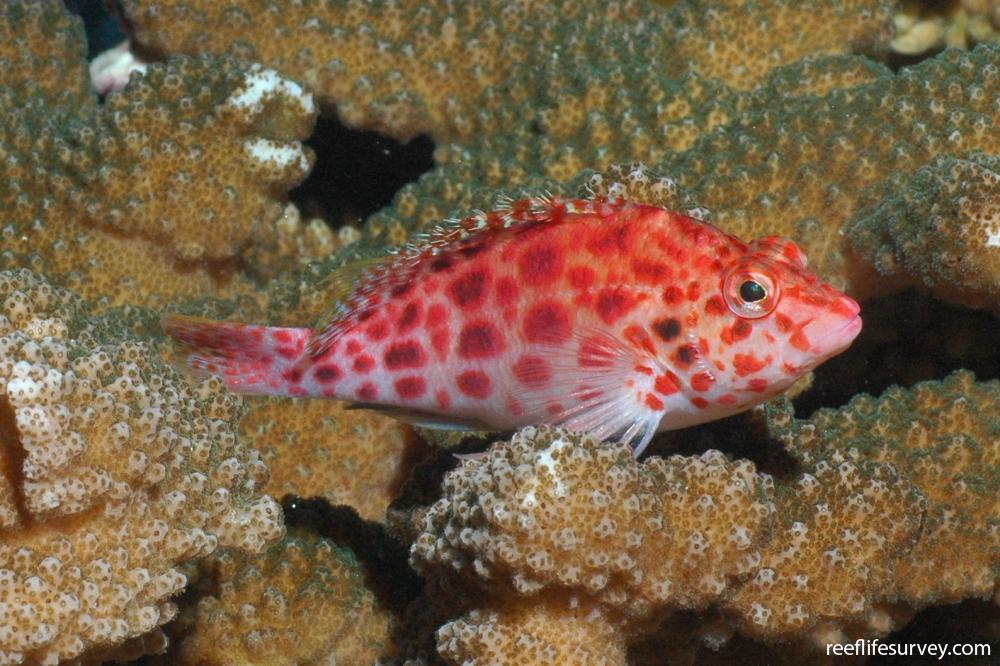Cirrhitichthys oxycephalus
Spotted hawkfish | Coral Hawkfish | Coral Hopper | Pixy Hawkfish | Sharp-headed HawkfishSimilar Species
Same Genus
Distribution
Tropical Eastern Pacific, Tropical Indo-Pacific
Description
Large, relatively evenly-sized blotches on body, spots on face, dorsal fin and tail, and dorsal spines with fine tassels. Spots on tail distinguish it from C. aprinus (Blotched Hawkfish) and lack of lines on face distinguish it from C. falco (Dwarf Hawkfish). Sits motionless on the reef amongst corals and sponges. Length to 10 cm.
Information
Max Size: 10 cm
Sea Temperature Range: 23.4-30.6°C
Depth: 1-40 m
Habitat Generalization Index: 19.45
Also referred to as the SGI (Species Generalisation Index), this describes the habitat niche breadth of the species. Species with values less than 15 are found in a relatively narrow range of reef habitat types (specialists), while those over 25 may be found on most hard substrates within their range (generalists). Learn more here.
Conservation and Rarity
IUCN Status: Not Evaluated
Occurrence: Frequent (16.0% of sites)
Occurrence describes how often the species is found on surveys within its distribution. It is calculated as the % of reef sites surveyed by RLS divers across all the ecoregions in which the species has been observed
Abundance: Many (25 per transect)
Abundance is calculated as the average number of individuals recorded per RLS transect, where present.
Edit by: Joe Shields















